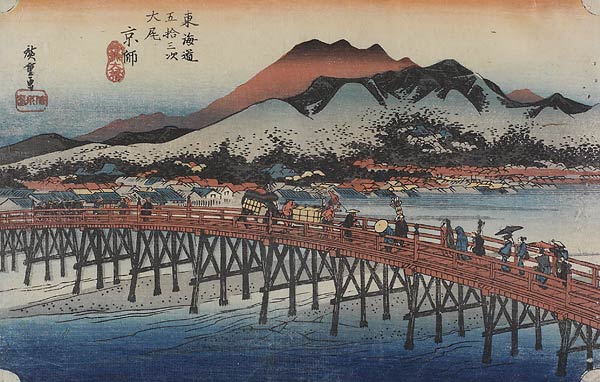 Kyoto: Our view looks across the Sanjo Bridge and the Kamo River to Mt. Osaka, the last barrier travelers crossed on their journey from Tokyo. On the hill to the right is Kiyomizudera, one of the most famous temples in Kyoto, a city with over a thousand temples and shrines, many dating back to the 8th and 9th centuries. Kyoto was the capital of Japan from 794 until 1185 when the Minamoto Yoritoma moved the government to Kamakura, then again during the Muramachi and Momoyama Periods from 1333 until 1603. Tokugawa Ieyasu moved the capital to Edo in 1603. Until the Edo period, Kyoto was the artistic center of the country - the home of the greatest painters, sculptors, calligraphers, potters, poets and authors. During the Edo period, Kyoto remained dignified, rarefied and refined; the daimyo and elite samurai adopted the styles of the imperial court. Tokyo on the other hand was brash, bold, and innovative, setting the styles for the merchants, tradesmen and craftsmen who built the manufacturing power of the country. Image Copyright: Minneapolis Institute of Art |